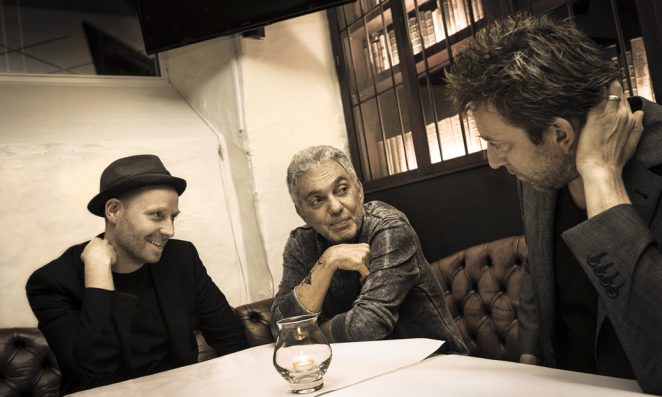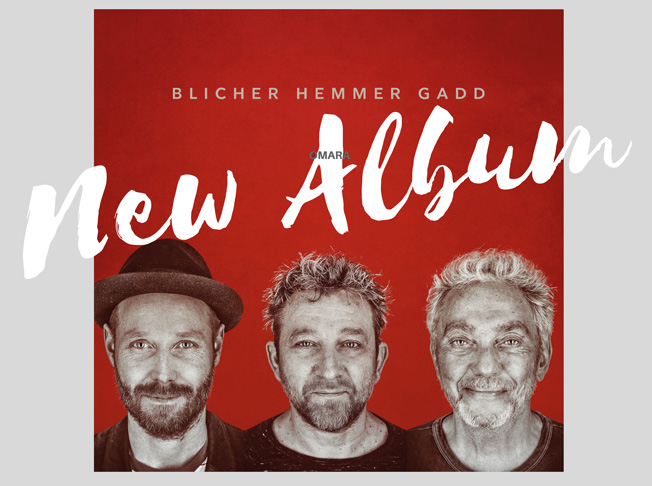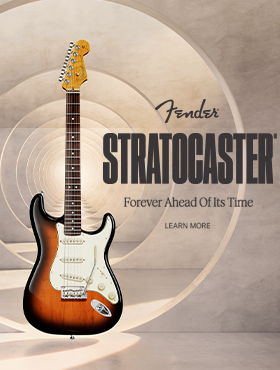
Asked to name a legendary guitarist, most musicians will fire back with Hendrix, Clapton, Beck or Page as the staple answers. Ask the same question of musicians about drummers and it will be Bonham or Moon in the rock music realm but for a more sophisticated style of rhythm, the answer will always be Steve Gadd. He’s a drum God, having played on stage and in the studio with some of the finest musicians on the planet including Steely Dan, Frank Sinatra, Paul McCartney, James Taylor, Paul Simon, Chick Corea, The Bee Gees, Eric Clapton and many, many more. In the heady jazz fusion days of the 70s and into the 80s, if a session drummer was required by a high profile artist, Gadd got first call. Dr Gadd has left a recording legacy like no other drummer. Think of the wonderfully intricate drum parts on Paul Simon’s Fifty Ways to Leave Your Lover … that’s Steve … or marvel at his innovative stick work on the classic Steely Dan track Aja.
Australian audiences have the opportunity to witness Steve Gadd in concert this month when he tours with his new project Blicher, Hemmer and Gadd, featuring Michael Blicher on sax and Dan Hemmer on Hammond organ. The bonus is that they’ll be performing the world debut of their new album Omara on this tour. Australian Musician’s Greg Phillips had the honour of speaking to Steve Gadd ahead of the band’s imminent Australian trip.
With Steve Gadd’s credentials, he could be playing with anyone he wants. Obviously the level of musicianship needs to be at a certain level to attract Gadd’s interest but it seems that his needs are really more simple than that.
“I like them as people,” he says of Michael and Dan. “I met them in Europe and we became friends. They have good hearts, we get along well. It’s nice music. If I can open some doors for those guys, it’s great! They have played a lot together so I like that. The ensemble stuff is good and I think I get a lot out of the trio format because of the way they play together.”
Traditionally there’s a special musical bond between the bass player and drummer in a band and Gadd has played with most of the world’s best bass players. However, with this band, Steve is reacting to bass notes provided by an organ. I wondered if his approach was any different dealing with bass notes provided by an instrument other than a bass…
“It’s not that different,” he tells me. “I always try to lock in with the bass, so it’s just a different sounding bass. It just takes a little bit of adjustment to get used to it, that’s all. I’ve listened to a lot of Hammond Organ. I liked Jack McDuff, Hank Marr, Richard ‘Groove’ Holmes, Gene Ludwig, Jimmy Smith … a lot of organ players.”
The new Blicher, Hemmer, Gadd album Omara was recorded live in Germany, England, and Denmark during their 2016 tour from four hard-swingin’ late-night shows at some of Europe’s finest jazz-clubs. Steve believes that the audience response can be an important factor in whether a live album works or not.
“A good audience can energise the set,” he says. “If the audience is a bit quiet, it can be difficult and a bit rough. Fortunately it worked out well for this live album.”
Known for his creative and sometimes complex drum parts, I wondered how much of Steve’s thought process was instinctive and how much was pondered over.
“Well you get time to rehearse a little bit and then you might put some takes down and listen to things back,” he says as he begins to describe the process. “Usually after a few takes I start feeling like I am getting in the ballpark. Actually you sort of get in the ballpark when you are rehearsing and then you start trying different things in the recording but then it is just trial and error. The music is really what dictates what is going on. The more I listen to the song, the more I know it. I get an idea of what the phrases are and what’s supposed to happen dynamically. Then once you know that, setting up those dynamic sections or where fills would appear or spaces but it’s all trial and error really … putting your heads together and trying to come up with an agreement about what’s best for the music.”

I was also interested to know his thought process in regard to gear selection for a particular project and what factors he takes into consideration when deciding upon a kit set up for a gig …
“I have a certain standard kit that I use,” he says. “What will happen on some dates is that I will take some of the cymbals away or if I’ve got 4 toms I might go with 2, depending on what the music calls for. A lot of times I don’t know what’s going to be happening, so I have a certain basic set up that I can either tune a lot of different ways or make smaller by taking things away. That works for clubs too because sometimes clubs are small and you have to be able to pick and choose configurations size-wise.”
Gadd has been a Yamaha drum endorsee for quite some time and that doesn’t seem like changing anytime soon. “I think they take good care of me in terms of getting me the gear in certain parts of the world,” he explains. “I’ve been really fortunate. You know sometimes I don’t always get exactly what I normally play but I get pretty close and in a lot of places like Japan, I have kits there and I have kits in England and different countries in Europe, so I am covered in a lot of ways. For the Australian tour I’ll be using a 20” bass drum, 4 toms and 3 or 4 cymbals and, plus a hi hat.”
The 70s was a special time for jazz fusion musicians in LA and New York, they were treated like the pop stars of the day. Musicians such as Stanley Clarke, Lee Ritenour, Chick Corea, Larry Carlton, George Duke and their peers could be heard regularly on the radio. I wondered if Steve missed those days …
“Well, I remember them fondly,” he says on reflection. “It was really a special period that came and went in my lifetime but I don’t know if you can ever go back there. First of all we were all crazy in those years to be begin with. We were lucky that we lived through the 70s. To go back to the way it was would be pretty tricky but I’m tellin’ ya that I was glad I was there and I had a lot of fun and met a lot of great people. I would certainly like to go back to be with the people who have since crossed over.”
There’s a reason why legendary artists become so famous. Sure they have the talent and the songs but they also surround themselves with the very best musicians available and Steve was often the one called upon to lay down the drum parts for the world’s biggest acts. Playing alongside the world’s best musicians doesn’t necessarily guarantee musical chemistry but when a combination of synchronistic musicians works well, magic begins to occur. For Steve this has been the case with many fellow musicians and particularly so with the bass players he has shared a stage or studio with. Who does he consider to be his musical soulmates?
“Richard Tee, Gordon Edwards, Will Lee, Marcus Miller, a lot of the things I have done, it’s been with great bass players and we had to click in a lot of different situations,” he says. “Anthony Jackson is another … I talk about bass players because that’s what I am really trying to lock in with first of all. Chick Corea, Paul Simon … I felt like I had a rapport with these guys… James Taylor .. I love what I do and I like the people that I work with. I am blessed.”
With so much music going on in his head, I wondered if Steve always had his musical receptors up, even during the more mundane periods of his life.
“Yeah, I mean the tyres on the road will do that or if I am on a train, I remember listening to the rhythms of the train, he tells me. “If the directional signal is on in the car, I’ll start using that as a click and play different rhythms on the steering wheel. I’m constantly listening to different things and I guess I do react to them rhythmically. Whether that leads to any ideas, I’ve never really analysed it that far but If I happen upon something in the car that I really like, then most likely it would be something I’d end up trying on the kit.”
For the rest of 2018 Steve will be hitting the road with his own band as well as touring for two months with James Taylor but for now he is looking forward to coming to Australia with Blicher, Hemmer, Gadd and playing material from their new album Omara … and what can we expect?
“We’ll get up there and play the best we can and give you the best music that we can put together,” Steve says. “Hopefully they’ll feel as good about it as we do. When that happens, it’s magic …people start sharing the same kind of energy.”
 BLICHER, HEMMER, GADD AUSTRALIAN TOUR DATES
BLICHER, HEMMER, GADD AUSTRALIAN TOUR DATES
MELBOURNE – 15TH 16TH 17TH FEBRUARY
JAZZ LAB
www.jazzlab.club
ADELAIDE – 18TH FEBRUARY
THE GOV
www.thegov.com.au
BRISBANE – 20TH FEBRUARY
THE TRIFFID
www.thetriffid.com.au
SYDNEY – 21ST 22ND FEBRUARY
THE BASEMENT
www.thebasement.com.au
PERTH – 25TH FEBRUARY
THE CHARLES HOTEL
www.charleshotel.com.au
The album Omara is released February 15, 2018. pre order here


